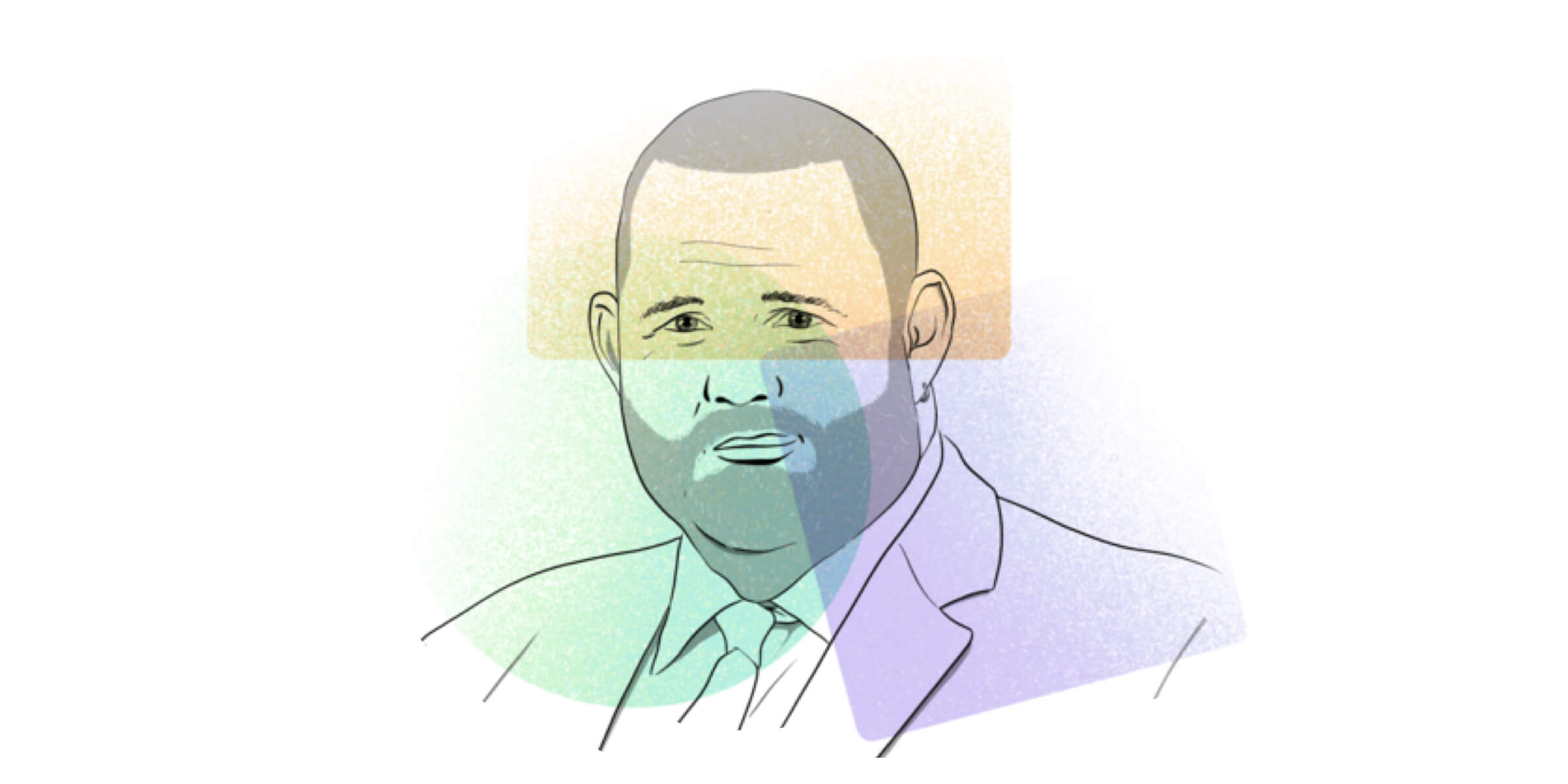Brad Holliday has worked on the executive level of HR at several Fortune-ranked healthcare, service & manufacturing corporations and their subsidiaries, such as SPX Corporation, AdvancePCS/Caremark, and Schaller Anderson (an Aetna company), and now Caravan Health. Caravan Health helps physicians and hospitals work together to create, operate and manage successful population health management programs that improve patient care & patient outcomes, clinician satisfaction and financial performance.
Here, he shares stories from his 30 years in HR, and how they’ve informed his HR philosophy.
I would say that my favorite part of HR is really finding and leveraging talent management to the greatest benefit of both the organization and the individual employee, and then determining how to make that real for all that are involved, employees and customers alike. How do we make sure that they see that we live by those values which fulfill that culture and exceed customer expectations? How do we build a communication plan so employees understand how to get there? How do we build a behavioral plan so we seek employees' help in making that happen? I’m a big believer in engaging staff and building a process agenda to integrate these behaviors across all functions, enterprise-wide.
That means we've got to have stakeholders across the organization that are helping us figure out how we're going to integrate these behaviors across the organization. And finally, aligning our leadership values with our decisions by making certain that we're walking the talk from the top of the organization. Those are the things that make me come to work every day.
1. Sometimes the biggest, most important part of HR is simply remembering the details.
Of course, sometimes one of the most frustrating parts of the job is when you think you’ve thought it all through. You have a great idea. You got buy-in from the executive team. You've gone so far as to take it to your board. You've got board approval. So everybody's excited, you feel like you've got the wind at your back, you start to implement something, and then you realize the big hole in your plan, the one spot you missed. It’s that old adage: the best-laid plans of mice and men often go awry.
I can think of a particular example where we implemented a plan and exactly that happened. The technical term for what we wanted to implement was a “participation unit plan,” but we referred to it as a ghost stock option plan in a privately-held company that I joined down in Phoenix several years ago.
And we put this thing together, put a lot of thought into it, a lot of work into it, general counsel and myself. I can't count the hours that we spent on this thing. We then rolled it out, with the intent of making sure that we provided a feeling of ownership in the organization for everyone, at all appropriate levels. The feedback from everybody that we were meeting with was off the charts. They are thrilled to be part of an organization that's doing this, because they’d never been with a company that allowed employees at an individual contributor level to have stock options.
We get 90% of the way through the process and realize we didn't develop a table for the executive assistants. And we were shocked at ourselves: How could we possibly have overlooked them? Just speaking for my own executive assistant, my days don't happen without her. We had around 2700 employees. So while the admin staff might have only made up a very small percentage of those employees, they still were very, very important. And to have completely overlooked them like that was just embarrassing.
And it wasn't like, “I caught it and I fixed it.” It was thanks to employees speaking up and saying sort of, “Hey, what about me? Tell me you didn't forget about me. When's my meeting gonna happen?” The CEO's executive assistant and my executive assistant knew that all this stuff was going on and had been rolled out. If they hadn’t started asking questions about when we were going to meet with them, I promise you, we would have finished the rollout and we wouldn't have addressed them at all. Luckily they were comfortable enough to start asking those questions.
2. Stay in touch with your company’s employees — and avoid being seen as part of “Oak Row.”
It’s important for me to stay in touch with employees. You rarely find me in my office — which I know has frustrated every CEO that I've reported to — and before I was at the executive level, every HR VP or director that I reported to.
I'll go all the way back to the start of my career when I started working in HR in Topeka, Kansas back in the mid- to late '80s. I spent my time out on the manufacturing floor, walking around talking to people. I grew up on a dairy farm so I could weld, but I couldn’t run much of the equipment there and certainly wasn’t qualified to the level of welding these guys were doing. But sometimes I could still help them by doing something as simple as holding something while they worked, showing that I wasn’t afraid to get my hands dirty alongside them. It was during those moments when I could ask them what was on their mind. I really appreciated that one-on-one communication with employees. And it definitely helped our conversation that I was making myself available to them, instead of them having to come to HR.
One thing that really struck me was hearing a group of employees referring to all the people on “Oak Row.” They were referring to this oak-colored paneling that was in all of the offices for the managers of the company. And to be clear, they used that term in a really negative way. I realized I needed to be seen as not part of Oak Row. I needed to be seen as one of them. Ever since then, I've carried that with me as a practice for staying connected and engaged with staff.
Similarly, when I went to work for PCS Health Systems, one of the requirements to be in management for any Eli Lilly company was you had to do a rotation in the business. And so my rotation was with sales. I spent nine months out of HR riding around with salespeople. This practice was core to the Strategic HR business Partner model, as it forced us out of our comfort zones as HR professionals and made you think like part of the core business. I believe it dramatically helps the HR professional to look at the business in much the same way those inside a business unit do, rather than only as we do from HR’s perspective — which is mainly one of policies, practices, compliance, strategy, change management and employee engagement.
My sense is always that employees aren't necessarily looking for a voice in the decision-making process, but they are looking for a voice overall. They want to know that we're paying attention to them. We've had feedback from employees saying, "It sure would have been nice if people at the top of the organization had talked with those of us that are actually doing the work before they made the decisions." And that's an indication that we dropped the ball. We made a change, it impacted people, and we didn't think about the impact to people before we made the change.
3. Part of that means being aware of the grapevine.
You know, the grapevine is the phrase that many in HR use for gossip. And I think the grapevine is going to exist in every organization, doesn’t matter how transparent you are. The key to working with and managing the grapevine is your company’s level of transparency.
If you're hiding out and holed up in your office all day, and if you're seen as unapproachable by employees — I'm a farm kid from Kansas, so I'm going to use these farm analogies — you have to realize that kind of thing is fertilizer for that grapevine. And if you keep doing that, that grapevine’s going to grow into this big, gnarly mess. Because grapevines are largely built on misinformation.
So we have to get in front of that misinformation and make sure that we sort of head it off at the pass, and let people know what the truth is. And if it's something that we don't know the answer to, we have to tell them that we don't know the answer to it, but that we're working on it. And it's amazing how much credibility you gain with employees when you just look them in the eye and say, “You know what? That is a great concern. And I understand your concern, I share your concern. I may not have an answer for you right now, but we will find an answer. So we will give an answer back to you, whether it's in our next all-hands meeting or all-staff call or some other form of company communication.” I've been in organizations of different sizes, and you manage those different ways, but no matter what size of the company, you have to make some commitment that you're going to follow back up to the employee with facts. It’s only with hard information that you can start to take the roots out of the grapevine.
4. Going from paper to SaaS changes how you approach performance management. (For one thing, it makes it a lot more efficient.)
I'll go all the way back to when I worked at PCS Health Systems. We were almost 4,000 employees. I would say even though it was paper and pen, it was a best in class talent management process. But it was paper-based. And one of the expectations of the strategic HR business partners was to go through each and every performance review to do some kind of legal review. If for nothing else, it’s to make sure that we didn't have somebody out there putting in a statement like, “Brad does pretty well with technology for a guy his age.” If I get laid off or I'm terminated or whatever, the existence of that phrase in a performance evaluation would have huge legal ramifications.
I think that we have to have more platforms like Lattice. We have to have more platforms that take us away from paper and take these processes that are so critical to us as managers and leading an organization and automate them.
5. Feedback is always important to a company.
I think that it's critical for each of us to receive feedback on how we're doing. Whether it's in our marriage or as students or as athletes or whatever our role in the moment might be. We all have a driving need for some acknowledgement that we're either doing well or that we need to up our game. It's just part of the human psyche. In the workplace, I believe it's crucial for every single employee in my opinion to have “line of sight.” All employees need to understand how their diligent work and their discretionary effort leads to the success of their team or their department, how the success of the team or department leads to the success of the company, and how the success of the department leads to that merit increase or variable compensation which ultimately links back to their pocketbook.
And not just to fulfill that need of the human psyche. If you're running a business, you need to have the business operating at its highest capacity. If you've got a V8 engine car, your car needs to be running on all eight cylinders. And if all eight cylinders aren't firing, then you take it to the mechanic and you get it figured out and you get it fixed. It's the same kind of thing in an organization. And if we're not properly diagnosing and addressing the performance issues of our employees, then the car's not going to run right. We're not going to get to the grocery store or that vacation destination or whatever it is that we're going to do in our car. We're not going to get there as quickly as we should. We may not get there at all if we're not performing that diagnostic. If we're not sharing that feedback with the employee and helping the employee to understand that they're missing the mark and here's what they need to do make sure they're hitting the mark.
I think it's important to demonstrate to them that this is important because we're showing an investment in them. If an employer really didn't care about this stuff and the company is an employer in an at-will state, the employer can just boot the employee out the door if we wanted to. And the company can go hire somebody else. But that's not what I believe the majority of employers in America today want to do. We want to spend this time giving employees the feedback that they need, that they want.
6. And when it comes to the future — people are still the answer, not just technology.
I'd like to see us go more towards the people side in the future, rather than just technology as some magic end-all, be-all answer. I think we need to see a real focus on life balance in the workplace. Even that term “work/life balance” — I think we’ll find ourselves turning away from it. I've found it eschewed by so many leaders I've talked with over the years. We can't continue to believe that our employees are just cogs in our machine. They are people with families and they've got lives, too. And then we need to find a better way to address that intersect between the need of my company and the needs of all of us as employees.





.jpg)

.png)